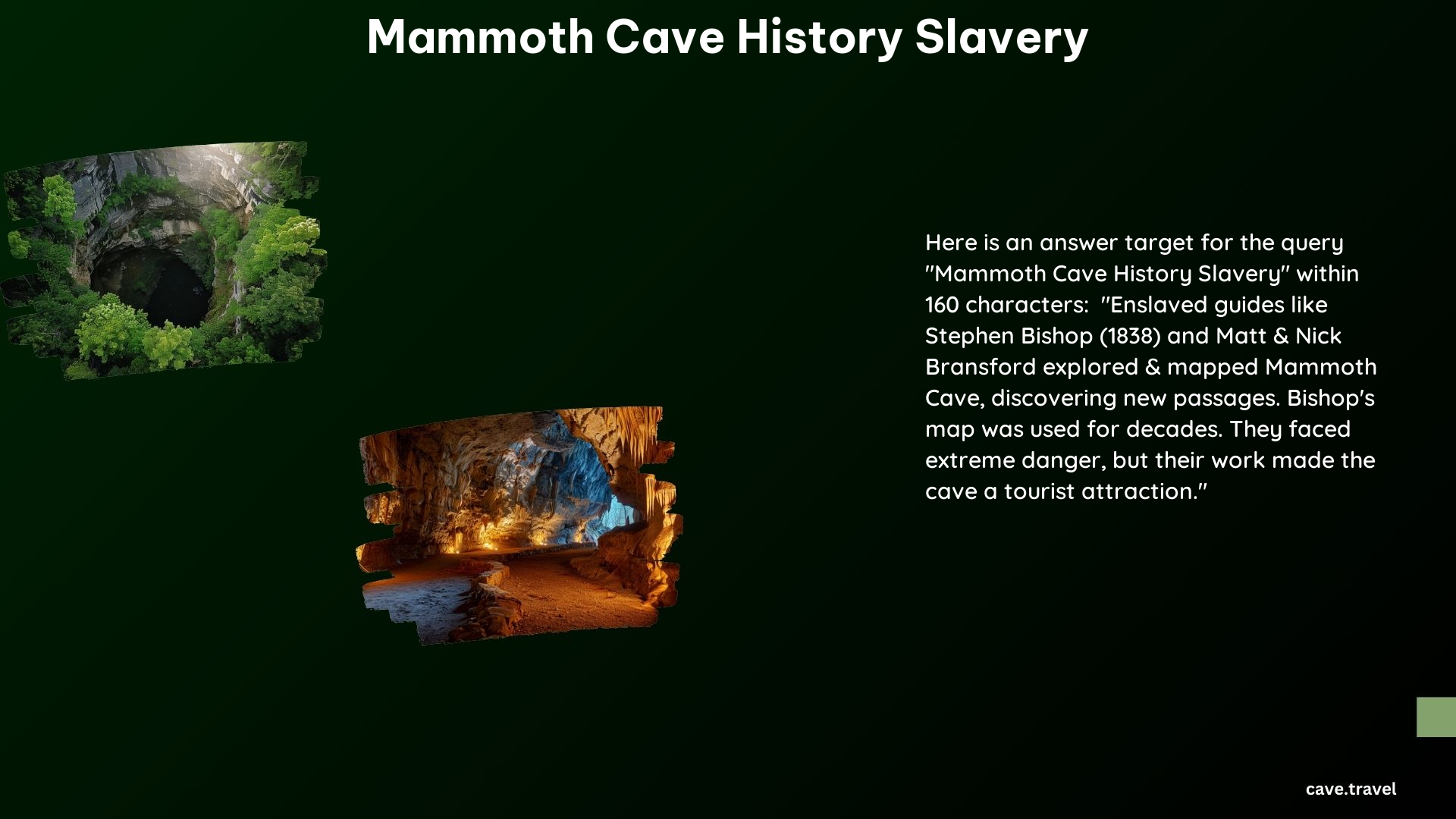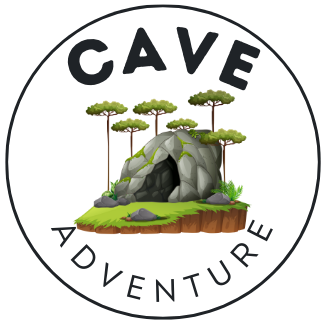Mammoth Cave, located in Kentucky, has a rich and complex history intertwined with the institution of slavery. The cave, which is the longest known cave system in the world, was explored and developed by enslaved African Americans during the 19th century. This blog post delves into the role of enslaved individuals in the history of Mammoth Cave, highlighting their contributions, the challenges they faced, and the lasting impact of their work.
Enslaved Guides and Explorers

One of the most notable enslaved guides was Stephen Bishop, who arrived at Mammoth Cave in 1838. Bishop was an exceptional guide, known for his intelligence, wit, and knowledge of geology. He was instrumental in discovering new passageways and areas within the cave, including the Mammoth Dome and the Ruins of Karnak. Bishop’s knowledge and memory were so impressive that he was able to draw a detailed map of the cave from memory, which was later published in a book.
Another two enslaved guides, Mat and Nick Bransford, were brought to Mammoth Cave from Nashville, Tennessee, in 1838. They were trained by the former superintendent of the mining operation and went on to become expert guides, exploring and mapping the cave. Their signatures, made with candle smoke, can still be found throughout the cave.
Working Conditions and Impact

The work of exploring and guiding in the cave was extremely dangerous. Guides faced the risk of becoming lost, injured, or trapped in the cave. They had to navigate through dark passages, cross deep pits, and deal with the threat of isolation. Despite the dangers, the work brought a sense of pride and freedom to the enslaved guides. They were able to move freely within the cave, interacting with visitors from all over the world, which was a rare experience for enslaved individuals during that time.
The contributions of enslaved guides like Stephen Bishop, Mat Bransford, and Nick Bransford have had a lasting impact on Mammoth Cave. Their discoveries and explorations paved the way for the cave’s development as a tourist attraction and its eventual designation as a national park.
Historical Context
During the War of 1812, enslaved laborers were used to mine Mammoth Cave for nitrates to produce saltpeter for ammunition. This marked the beginning of the cave’s exploitation for economic purposes. After the war, the cave began to attract tourists, and by the mid-1800s, it had become a popular destination. In 1941, Mammoth Cave was officially designated as a national park, recognizing its natural and historical significance.
Family Legacy and Commemoration
The Bransford family, descendants of Mat and Nick Bransford, have continued to play a significant role in the history of Mammoth Cave. Jerry Bransford, a fifth-generation guide, has worked to preserve the family’s legacy and ensure that the contributions of enslaved guides are remembered and honored.
Efforts have also been made to commemorate the history of enslaved guides at Mammoth Cave. A monument was erected in the Old Guide’s Cemetery to honor Stephen Bishop, and the Bransford family cemetery has been restored and preserved.
Key Facts and Figures
| Fact | Value |
|---|---|
| Cost of Visiting Mammoth Cave | Ranges from around $15 to $60 per person, depending on the type of tour and the season. |
| Timings | The park is open year-round, with varying hours depending on the season. Tours typically run from 9:00 AM to 5:00 PM. |
| Visitor Center Hours | The park’s visitor center is open from 8:00 AM to 5:00 PM. |
| Contact Information | For more information, call (270) 758-2180. |
The value of Mammoth Cave lies in its natural beauty, historical significance, and the stories of the enslaved guides who explored and developed it. The park offers a range of tours and activities, making it a valuable destination for those interested in history, geology, and adventure.
References
- U.S. National Park Service. (2021). Stephen Bishop. Retrieved from https://www.nps.gov/people/stephen-bishop.htm
- WBKO. (2023). Slaves explored, discovered cave paths at Mammoth Cave National Park. Retrieved from https://www.wbko.com/2023/02/02/slaves-explored-discovered-cave-paths-mammoth-cave-national-park/
- Smithsonian Magazine. (2019). Enslaved Tour Guide Stephen Bishop Made Mammoth Cave the Must-See Destination It Is Today. Retrieved from https://www.smithsonianmag.com/history/enslaved-tour-guide-stephen-bishop-made-mammoth-cave-must-see-destination-it-today-180971424/
- PBS. (2023). Black History at Mammoth Cave. Retrieved from https://www.pbs.org/video/black-history-mammoth-cave-lfegwa/
- LPM. (2024). How a celebrated family legacy continues to impact Kentucky’s Mammoth Cave. Retrieved from https://www.lpm.org/news/2024-03-01/how-a-celebrated-family-legacy-continues-to-impact-kentuckys-mammoth-cave
- Mammoth Cave National Park. (n.d.). Plan Your Visit. Retrieved from https://www.nps.gov/maca/planyourvisit/index.htm
